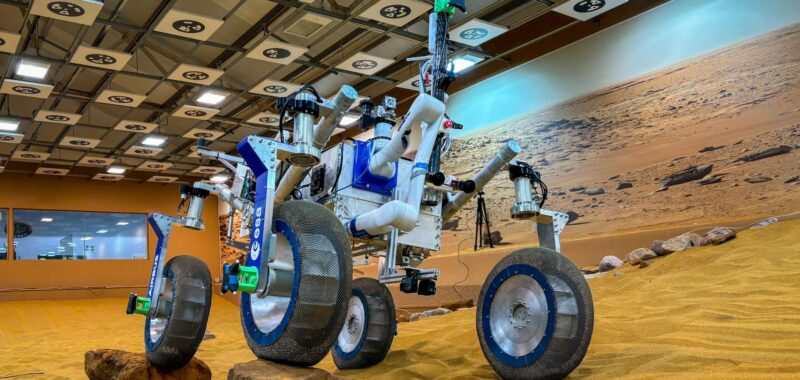Any vehicle traversing the rocky terrain on Mars needs a sturdy set of wheels. NASA’s Perseverance rover, for example, sports thick aluminum ones covered in cleats to enhance its traction and mobility. But there’s always room for improvement, and NASA researchers are reportedly busy designing the next generation of tires for future rover expeditions across the Red Planet—and unlike Perseverance, one new design puts the emphasis on flexibility over rigidity.
According to NASA on Tuesday, engineers at the Glenn Research Center in Cincinnati, OH, recently finished testing a prototype rover featuring the latest “shape memory alloy” (SMA) spring tire technology. This novel alloy relies on a specially manufactured nickel-titanium blend capable of returning to its original shape after bending, stretching, or experiencing extreme temperature shifts. While standard tires are often completely solid, these SMA alternatives more resemble a wheel-shaped, tightly interlocking mesh framework.

Santo Padula, a NASA materials engineer at the Glenn Research Center, has worked on finetuning SMA technology for years, but only recently realized their potential for Mars rover projects. The idea came after visiting NASA’s Simulated Lunar Operations (SLOPE) Laboratory following an unexpected run-in with an old colleague, Colin Creager, who showed him their latest rover tests. Almost immediately, however, Padula noticed a potential flaw in the prototype’s steel wheels.
“The minute I saw the tire, I said, aren’t you having problems with those plasticizing?” asked Padula in reference to steel’s potential to deform irreversibly.
“Colin told me, ‘That’s the only problem we can’t solve,” Padua recounted. “I said, I have your solution. I’m developing a new alloy that will solve that. And that’s how SMA tires started.”
Both Padula and Creager’s teams collaborated for months to adapt SMAs for rover wheels, eventually resulting in a version ready for stress tests. Last fall, the researchers travelled to the Airbus Defence and Space facilities in Stevenage, UK, to try out the SMAs in an enclosed Martian terrain simulation.
“We went out there with the team, we brought our motion tracking system and did different tests uphill and back downhill,” said Creager. “We conducted a lot of cross slope tests over rocks and sand where the focus was on understanding stability because this was something we had never tested before.”
According to NASA, while the SMA tire shape shifted in response to the rocky ground, its deformations were minimal and still met “all expectations.”
“My goal is to extend the operating temperature capability of SMAs for applications like tires, and to look at applying these materials for habitat protection,” Padua said in NASA’s rundown.
He and Creager believe upcoming rovers fitted with SMA wheels may not just benefit missions to Mars, but to the moon, as well. There’s even a possibility for the alloys to find their way into other projects, such as astronaut habitats and other lunar base structures. In particular, SMA exteriors show potential for withstanding and absorbing micrometeorite strikes that often occur on the Moon.


